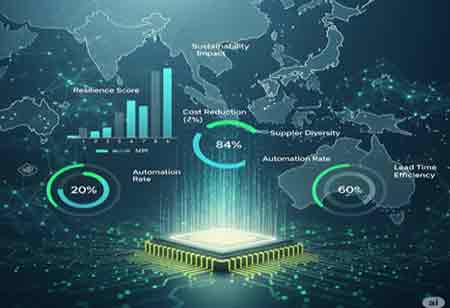THANK YOU FOR SUBSCRIBING
Four Must-have Features of an Ideal Procurement Platform
Choosing the right procurement platform for a company, regardless of size or industry, can be difficult and time-consuming, akin to walking through a minefield.

By
Apac CIOOutlook | Monday, October 04, 2021
Stay ahead of the industry with exclusive feature stories on the top companies, expert insights and the latest news delivered straight to your inbox. Subscribe today.
Even minor errors can result in disasters ranging from revenue loss to customer churn and legal complications.
Fremont, CA: Choosing the right procurement platform for a company, regardless of size or industry, can be difficult and time-consuming, akin to walking through a minefield. Even minor errors can result in disasters ranging from revenue loss to customer churn and legal complications.
The difficulty stems from the fact that there are so many different solutions and technologies to choose from. Therefore, before making a decision, users should consider deployment options, customizability, cost, scalability, and business value.
With so many factors to consider and weigh when selecting procurement software for your business, one more vital factor to consider – one's own needs! It is critical to carefully evaluate one's business needs and match them to the functionality available and their purchasing budget, and the features users require.
Top features every procurement software must have
- Supplier lifecycle management
Every procurement platform's core function is supplier management. Such a feature will aid in identifying, onboarding, managing, and analyzing suppliers who span multiple departments and categories within a procurement process.
- Spend insights and reports
An ideal procurement platform should also provide relevant data in the most user-friendly manner. Thus, it is the best aggregator of purchase data, not only the best creator of purchasing data.
- Cloud-based model
On-premise, siloed procurement suites are no longer sufficient for businesses. The modern workplace has evolved. It calls for an omnichannel, always-on solution for performing procurement operations on the go.
A cloud-based procurement software will allow businesses to create, manage, and maintain a centralized database that can get accessed at any time and from any location. Procurement cloud solutions are scalable, cost-effective, and do not require software updates or installation.
While traditional on-premise tools can take anywhere between a few months to a year to deploy, hybrid takes nearly half the time, and a cloud-based platform can be up and running in four weeks.
- Customization
Implementing boxed procurement tools that a trained IT professional must customize is a lot of work for little payoff.
Instead of trying to fit one's processes into a rigid tool, an organization can derive more value from a procurement platform if it can be beneficial to model unique procurement processes, using the tool to standardize, streamline, and reinvent procure-to-pay processes.





